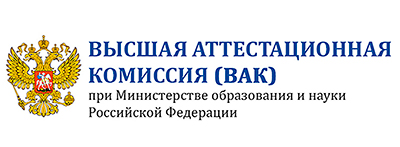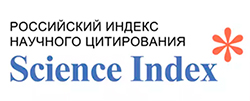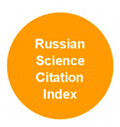Casualties in armed conflicts in the world: 1946-2015
Abstract
Direct and indirect losses resulting from major conflicts significantly upset the natural reproduction of a given population and give rise to large-scale waves of migration. Estimating these losses remains a persistent task for demographers. An important source of information regarding the number of casualties of combat and one-sided violence is annually updated databases on armed conflicts. The article discusses data sources and evaluations of mortality due to organized collective violence. The trends in the number of armed conflicts of various types and of the death toll resulting from them for the period 1946-2015 are analyzed for the whole world and for the major regions, as well as the impact of losses in armed conflict on the population and its age and sex composition.
From 1946 to 2015, the severity and bloodiness of armed conflicts declined, but since 2011 there has been a tendency towards an increase in the number of conflicts, as well as in the number of people killed in them. The number of internal armed conflicts, which then often develop into international ones with the participation of many countries, is increasing. So far, however, a comparison of the last quarter-century (the era after the Cold War), and the previous quarter-century indicates a reduction in the number of major armed conflicts involving the state and one-sided violence in the form of mass murder on ethnic and political grounds.
Downloads
References
COW (2016). The correlates of war project. COW war data, 1816 - 2007 (v4.0). URL: http://correlatesofwar.org/data-sets/COW-war (accessed: 12.06.2016).
Eck K., L. Hultman (2007). Violence against civilians in war: insights from new fatality data // Journal of peace research (March). Vol. 44: 233-246.
Gleditsch N.P., P. Wallensteen, M. Eriksson, M. Sollenberg, H. Strand (2002). Armed conflict 1946-2001: A new dataset // Journal of peace research (September). Vol. 39. №5: 615-637.
HSRP (2014a). Human security report project (HSRP). Simon Fraser university. Vancouver, Canada. Human security report 2013. The decline in global violence: evidence, explanation, and contestation. Vancouver: Human Security Press. URL: http://www.hsrgroup.org/docs/Publications/HSR2013/HSRP_Report_2013_140226_Web.pdf (accessed: 10.06.2016).
HSRP (2014b). The human security report project (HSRP). Security stats . URL: http://www.hsrgroup.org/our-work/security-stats/overview-security-stats.aspx (accessed: 10.06.2016).
IEP (2016).The Institute for economics and peace (IEP). Global peace index 2016. Ten years of measuring peace. URL: www.economicsandpeace.org (accessed: 09.06.2016).
Lacina B., N.P. Gleditsch (2005). Monitoring trends in global combat: a new dataset of battle deaths // European journal of population. 21: 145-166.
Marshall M.G. (2016). Major episodes of political violence 1946-2015. URL: http://www.systemicpeace.org/warlist/warlist.htm (accessed: 24.06.2016).
Marshall M.G., B.R. Cole (2014). Global Report 2014. Conflict, governance, and state fragility. Center for systemic peace. Vienna, VA USA. URL: www.systemicpeace.org. Publication date: july 23, 2014 (accessed: 24.06.2016).
Melander E. (2016). Organized violence in the world 2015. An assessment by the Uppsala conflict data program. UCDP Paper. №9: 9. URL: http://www.pcr.uu.se/digitalAssets/61/61335_1brochure2.pdf (accessed: 10.06.2016).
Pettersson T., P. Wallensteen (2015). Armed conflicts, 1946–2014 // Journal of peace research. 52(4): 536–550. URL: http://www.pcr.uu.se/digitalAssets/61/61533_1journal-of-peace-research-2015-pettersson-536-50.pdf (accessed: 10.06.2016).
Sundberg R. (2009). Revisiting one-sided violence – a global and regional analysis // States in armed conflict / L. Harbom, R. Sundberg, eds. Uppsala: Universitetstryckeriet.
Sundberg R., K. Eck, J. Kreutz (2012). Introducing the UCDP non-state conflict dataset // Journal of peace research. 49(2): 351-362.
UCDP (2015a). Uppsala conflict data program (UCDP), Department of peace and conflict research. Uppsala university. Centre for the study of civil wars, International peace research institute, Oslo (PRIO). UCDP/PRIO Armed conflict dataset. Version 4-2015. URL: http://www.pcr.uu.se/research/ucdp/datasets/ucdp_prio_armed_conflict_dataset/ (дата обращения: 10.06.2016).
UCDP (2015b). UCDP battle-related deaths dataset. Version 5.0-2015. URL: http://www.pcr.uu.se/research/ucdp/datasets/ucdp_battle-related_deaths_dataset/ (accessed: 10.06.2016).
UCDP (2015c). UCDP non-state conflict dataset. Version 2.5-2015. URL: http://www.pcr.uu.se/research/ucdp/datasets/ucdp_non-state_conflict_dataset_/ (accessed: 10.06.2016).
UCDP (2015d). UCDP one-sided violence dataset. Version 1.4 – 2015. URL: http://www.pcr.uu.se/research/ucdp/datasets/ucdp_one-sided_violence_dataset/ (accessed: 10.06.2016).
UCDP (2016). 2015 dataset. 2015 г. URL: http://www.ucdp.uu.se/#/year/2015 (accessed: 11.07.2016).
UN (2014). United Nations, Department of economic and social affairs, Statistics division. 2010 World population and housing census programme // Progression of the 2010 gensus round. URL: http://unstats.un.org/unsd/demographic/sources/census/censusdates.htm (accessed: 18.08.2015).
UN (2015a). United Nations, Department of economic and social affairs, Population division. World population prospects: The 2015 revision, DVD edition. URL: http://esa.un.org/unpd/wpp/DVD/ (accessed: 18.08.2015).
UN (2015b). United Nations. A/RES/70/1 - Transforming our world: the 2030 agenda for sustainable development. URL: sustainabledevelopment.un.org (accessed: 10.06.2016).
























